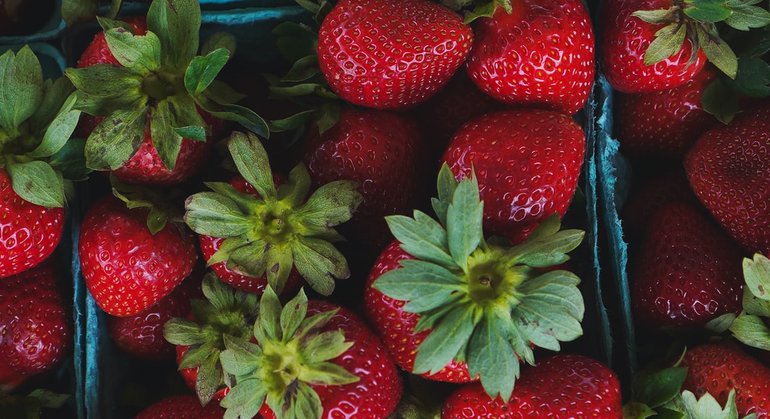


Strawberry farming is a relatively new economic venture for most Kenyan farmers, but it’s a venture that promises potentially huge returns financially and job creation in a short period of time. In this article we guide you on the ABC’s of growing strawberries successfully in Kenya.
The strawberry does not need an introduction, it’s a familiar fruit that most of us have come across or had the chance to relish its great flavor.
Growing up I used to classify the strawberry as a ‘fancy fruit’ since it was very expensive and rare, well as the years have gone by and farming getting more advanced and easier, Kenyan farmers have realized the economic potential of these fruit and most of them have cashed in huge returns as its demand grows both in the local and international markets. Also the availability of high quality cultivars or grafted seedlings has greatly guaranteed farmers of bountiful harvests and good quality produce.
Suitable growing areas: include Kiambu, Nyeri, Nairobi, Kirinyaga, Kitale, Kericho, Naivasha, Molo, Embu, Kinangop, Sagana, Kitengela, Athi River etc.
Strawberry varieties available in Kenya
Strawberries come in many varieties but not all varieties do well in Kenya, some of the best performing strawberry varieties include:-
Strawberry Cultivation Basics
Strawberry planting and harvesting often can take up to a year. You’d need to go through several stages of planning, planting, cultivating and harvesting. To start a farm, you’d need to prepare your soil for strawberry growing. Check on the kind of soil you have by performing a soil test. Strawberries prefer loam soil, particularly sandy loam soil. Knowing your soil type and composition will help you decide how to prepare it for cultivation.
Ecological requirements ideal for strawberry farming in Kenya
Altitude
Strawberry require an Altitude of around 1250m – 2200m above sea level
Temperatures
Stable temperature in the range of 10 – 300C
Rainfall
-Well distributed 1200mm. Where rainfall is less than this irrigation is necessary at 25mm/week. The crop does not tolerate drought. Irrigation by drip increases the yields, improves the size and appearance of berries and prolongs the harvest period.
Soils
The strawberry succeeds in a surprisingly wide range of soils and situations and, compared with other horticultural crops, has a low fertilizer requirement. It is, however, susceptible to drought and requires moisture-retaining soil or irrigation by furrow or sprinkler. Although, deep sandy loams, rich in humus are most ideal, with good moisture retaining capacity. The drainage should be sufficient to keep the water level at least 80 – 100cm below the soil surface. Poor drainage makes the strawberries weak and susceptible to diseases. The ideal soil pH range is 5.5 – 6.5. Avoid saline soils.
Additionally, the plants are susceptible to nematodes and pathogenic soil fungi, and many growers sterilize the soil with chemicals before planting.
Land preparation
Plough and work the soil to get a deep and loose planting bed. Remove weeds and add manure and ash.
Planting
Strawberries can be grown from seeds, or using transplants (runners) from already existing strawberry plants. It is however more difficult to start with seeds and thus runners are mostly used.
Finding disease free seedlings that won’t disappoint you can be quite challenging, Denettols seedlings offers you strawberry runners and seedlings that are grown with extra care and following all the best practices to ensure you are successful in your strawberry farming venture.
Steps to follow during planting
Pests & Diseases Management
Harvesting
Fruit is typically ready for harvesting 4-6 weeks after blossoming. Harvest only fully red (ripe) berries, and pick every three days. Cut by the stem; do not pull the berry or you could damage the plant.